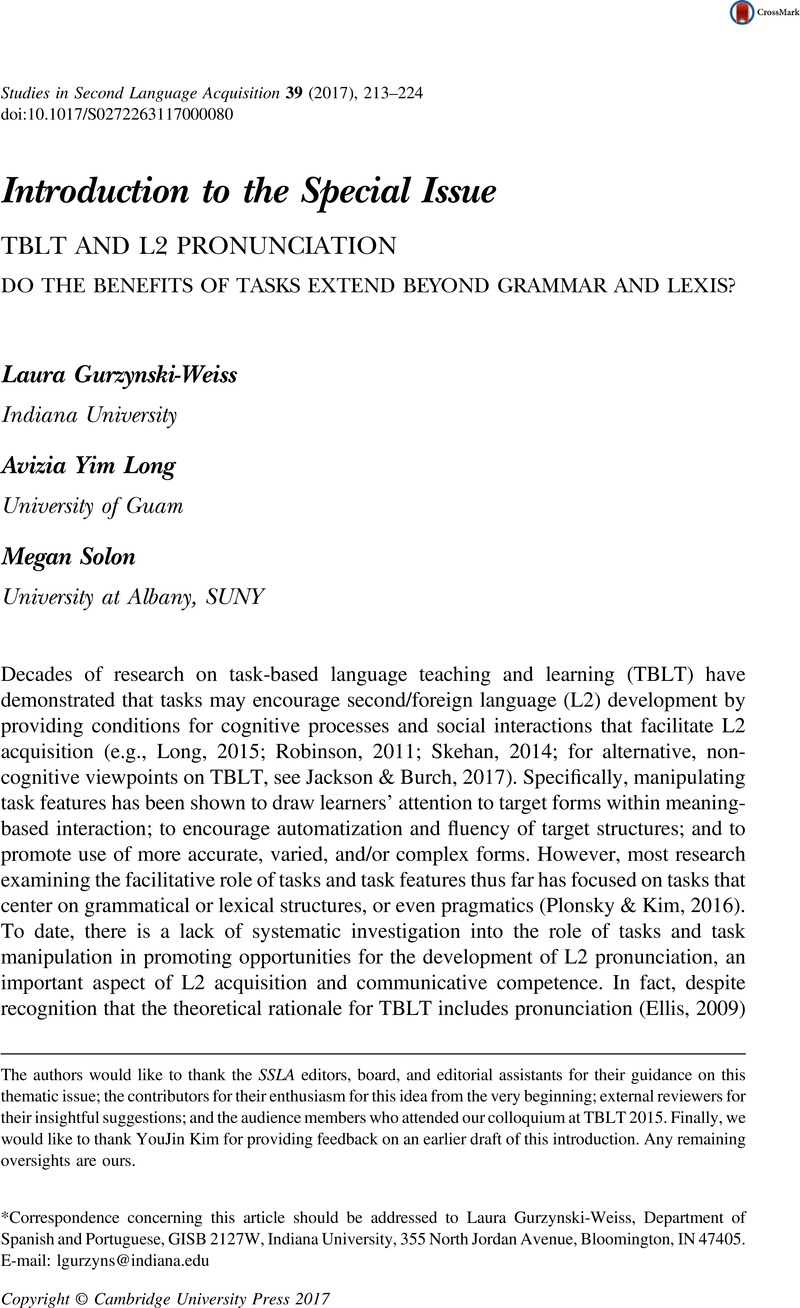Crossref Citations
This article has been cited by the following publications. This list is generated based on data provided by Crossref.
Gurzynski-Weiss, Laura
and
Plonsky, Luke
2017.
Expanding individual difference research in the interaction approach.
Vol. 16,
Issue. ,
p.
305.
Loewen, Shawn
and
Sato, Masatoshi
2018.
Interaction and instructed second language acquisition.
Language Teaching,
Vol. 51,
Issue. 3,
p.
285.
Taguchi, Naoko
and
Kim, YouJin
2018.
Task-based approaches to teaching and assessing pragmatics.
Vol. 10,
Issue. ,
p.
1.
Wisniewska, Natalia
and
Mora, Joan C.
2020.
CAN CAPTIONED VIDEO BENEFIT SECOND LANGUAGE PRONUNCIATION?.
Studies in Second Language Acquisition,
Vol. 42,
Issue. 3,
p.
599.
Gurzynski-Weiss, Laura
2020.
Cross-theoretical Explorations of Interlocutors and Their
Individual Differences.
Vol. 53,
Issue. ,
p.
3.
Barón, Júlia
Celaya, M. Luz
and
Levkina, Mayya
2020.
Learning pragmatics through tasks.
Applied Pragmatics,
Vol. 2,
Issue. 1,
p.
1.
Gordon, Joshua
2021.
Pronunciation and Task-Based Instruction: Effects of a Classroom Intervention.
RELC Journal,
Vol. 52,
Issue. 1,
p.
94.
Mora-Plaza, Ingrid
Ortega, Mireia
and
Mora, Joan C.
2022.
Theoretical and Practical Developments in English Speech Assessment, Research, and Training.
p.
241.
Gilabert, Roger
2023.
Where SLA and Language Education Meet: The Transfer from Task-Based Needs Analysis to Task Design.
Education Sciences,
Vol. 13,
Issue. 10,
p.
1015.
Nagle, Charles
Sachs, Rebecca
and
Zárate-Sández, Germán
2023.
Spanish teachers’ beliefs on the usefulness of pronunciation knowledge, skills, and activities and their confidence in implementing them.
Language Teaching Research,
Vol. 27,
Issue. 3,
p.
491.
Mora-Plaza, Ingrid
Mora, Joan C.
Ortega, Mireia
and
Aliaga-Garcia, Cristina
2024.
Is L2 pronunciation affected by increased task complexity in pronunciation-unfocused speaking tasks?.
Studies in Second Language Acquisition,
Vol. 46,
Issue. 4,
p.
1117.
Levis, John M.
and
Nagle, Charlie
2024.
The Cambridge Handbook of Bilingual Phonetics and Phonology.
p.
791.
Crowther, Dustin
and
Isbell, Daniel R.
2024.
Second language speech comprehensibility: A research agenda.
Language Teaching,
Vol. 57,
Issue. 4,
p.
533.
Fullana, Natalia
Mora-Plaza, Ingrid
Mora, Joan C.
Adrian, Miren
and
Sosa-López, Gisela
2024.
Task complexity effects on L2 speech rhythm in spontaneous speech production.
Second Language Research,
Fullana, Natalia
and
Pujolà, Joan-Tomàs
2024.
La integración de la pronunciación en el aula de ELE.
Vol. 42,
Issue. ,
p.
88.
Zhang, Ying
2025.
The Influence of Game-Enhanced Communication on EFL Learners’ Pragmatic Competence in Compliment Responses.
Applied Linguistics,
Vol. 46,
Issue. 1,
p.
110.




